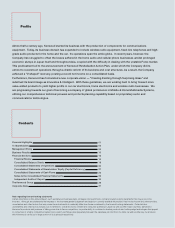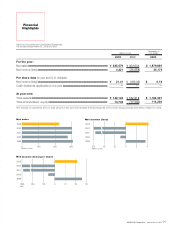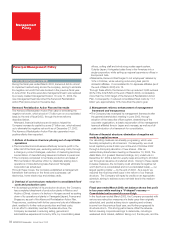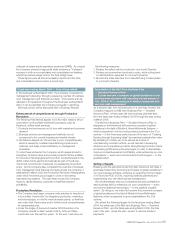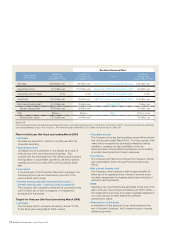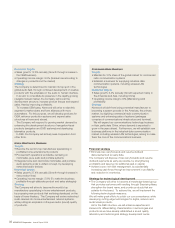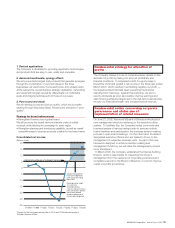Kenwood 2003 Annual Report Download - page 8
Download and view the complete annual report
Please find page 8 of the 2003 Kenwood annual report below. You can navigate through the pages in the report by either clicking on the pages listed below, or by using the keyword search tool below to find specific information within the annual report.
Net sales 225.6 billion yen 185 billion yen
Annual 12.2% rises in the fiscal year ending March 2004 onward
233 billion yen
Operating income 12.3 billion yen 15.5 billion yen
Double that of fiscal year ended March 2003
24 billion yen
Operating income margin 5.4% 8.4%
Double that of fiscal year ended March 2003
10.3%
Inventories 32.2 billion yen 23 billion yen
Half that of fiscal year ended March 2003
17.5 billion yen
Net interest-bearing debt 50.1 billion yen 30 billion yen Zero net-debt 0 billion yen
Interest-bearing debt 80.9 billion yen 68 billion yen 33 billion yen
ROE (Note) − (Note) − 20% 20% or more
Shareholders' equity 13.7 billion yen 24 billion yen 58 billion yen
'Excellent Kenwood Plan'
Consolidated
performance
Results in
the fiscal year
ended March 2003
Targets for
the fiscal year
ending March 2004
Targets for
the fiscal year
ending March 2006
Targets
(Note) ROE
ROE is excluded because the resultant percentage becomes an extremely large figure due to a large sum of loss carryforwards. If loss carryforwards are subtracted
from net shareholders' equity, ROE would be 7.4% in the fiscal year ended March 2003, when net income was 4.2 billion yen.
Plan for initial year (the fiscal year ending March 2004)
• Net sales
Net sales are expected to decline in the first year after the
corporate rebuilding.
• Operating income
Operating income is predicted to rise sharply as a result of
restructuring of the home electronics business. This,
coupled with the withdrawal from the cellular phone business
and liquidation of unprofitable operations, will likely increase
operating income by a steep 26% over the previous fiscal
year.
• Inventories
In the initial year of the Production Revolution campaign, the
Company aims to reduce inventories by one-third of the
previous fiscal year's levels.
• Interest-bearing debt (Net interest-bearing debt =
Interest-bearing debt – Cash and cash equivalents)
The Company had completely redeemed its corporate bonds
worth 5 billion yen in April, and agreed on a repayment
schedule with the lenders.
Targets for final year (the fiscal year ending March 2006)
• Net sales
The Company aims to increase net sales by annual 12.2%
for the fiscal year ending March 2004 onward.
• Operating income
The Company is hoping that operating income will be double
that of fiscal year ended March 2003. For this purpose, it will
make the home electronics business profitable as well as
maintain or enhance the high profitability of the car
electronics and communications businesses, by reinvesting
in product development and these businesses.
• Inventories
The Company will halve its inventories from the level of fiscal
year ended March 2003, through Production Revolution
efforts.
• Net interest-bearing debt
The Company, which requires credit for approximately 20
billion yen of its operating funds, intends to achieve a zero
net-debt management, by keeping debts below the level of
cash and cash equivalents.
• ROE
Assuming loss carryforwards are eliminated by the end of the
plan's final year, the Company will achieve an ROE of 20% —
the threshold for becoming a company of global excellence in
our core business domains backed by sufficient
shareholders' equity.
• Resumption of dividends
In anticipation of the disposal of loss carryforwards by the
end of the plan's final year, the Company hopes to resume
dividend payments.
06 KENWOOD Corporation Annual Report 2003


